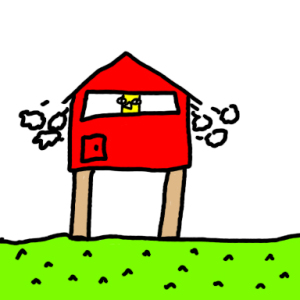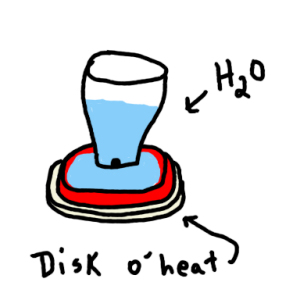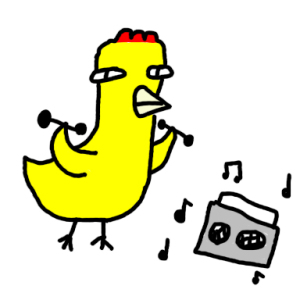The Recurring Winter and Chickens Question
Did you know that winter happens every year? There’s a fun science fact for you. I’ll even throw in a bonus fact. Every year when winter comes, people start asking me what I do with my chickens in the wintertime. It’s as dependable as the seasons themselves, but requires less snow shoveling to deal with. (Some of you may accuse me of shoveling other things, but perhaps that’s a discussion for another time). I’m not annoyed by this, as clearly I enjoy talking about chickens, and I’m happy to share my tricks with people who show an interest.
So then, what are these tricks I speak of? Well, there really aren’t any to speak of. For the most part, keeping chickens in the winter isn’t a whole lot different than keeping them the rest of the year. You feed them, make sure they have water and shelter, and try to keep varmints from eating them. A key thing is to have made sure that the chickens you got were a good match for the climate you live in. There are breeds that can deal with the cold, and breeds that can’t. Likewise, there are ones that can deal with heat, and ones that can’t. So, if anything, if you’ve done your research before you got your chickens, you’re most of the way there.
Where it gets a little confusing is the need in the winter to keep the birds out of drafts, but to make sure the coop has adequate ventilation. Moisture in the coop is bad at any time of year. It can cause respiratory issues, but when it gets below freezing, that moisture in the air is what’s going to freeze to the exposed parts of the chicken, like their combs. When I built my coop, I read a helpful bit of advice. It said “consider how much ventilation you think your coop needs, and then double that.” What I’ve done is to put vents in each upper corner of two sides of the coop, using heating vent covers to try to minimize drafts. I then made sure the roost sat directly between these, so no one would be right in front of the air flow. I’m sure there are windy nights where a breeze can still get in there, but if they’re not directly in it, they should be good. Also, given my skills at building things, there are spots where parts of the coop come together that are less than airtight. I originally was going to seal them, until I learned about the ventilation rule, and suddenly, my flaws as a craftsman became strengths. These gaps are near the ceiling, so again, nothing will be hitting them directly, but air can move in and out. People sometimes ask if on cold mornings I see steam coming out of the coop. If I did, I would panic. That would be a sign that there is way too much moisture in there. I haven’t ever seen this in my coop, so I think I’ve done ventilation right.
A different moisture issue is what to do about their water when it’s below freezing. You can get all sorts of electric water warming devices, but there’s no electricity near my coop, and running an extension cord from the house out to there is generally considered a bad idea. I have seen people who’ve made battery powered heaters using cookie tins and car headlamps, but I’m not sure I’m quite that skilled. I can eat the cookies in the tin, but my electronics abilities might make this more frustrating than useful. I’ve ended up doing two things. One is to put apple cider vinegar in the water. I do this anyway, since it’s good for them, but it also lowers the freezing point of the water a little bit. Then I bought a device that’s meant to keep pet beds warm, but is easily adapted to chickens by just putting it under the water. It looks like a fat frisbee, and it’s as wide as the base of my small waterer. Each morning I microwave it, and then I supposedly get up to 8 hours of warmth. I’m sure it’s somewhat less when you place it out in the elements, but it keeps the water unfrozen for long enough. If it’s extremely cold out, chances are they won’t even leave the coop for water anyway. Last year during the polar vortices they didn’t, and still lived to tell the tale. If they do end up getting thirsty because the water froze, they’ve learned to come right out and drink up first thing in the morning before it happens again.
Finally, as I’ve mentioned before in various posts, I just make sure they’re getting enough protein when it’s cold. Keeping warm takes energy, so they can load up on scratch or black oil sunflower seeds, and burn it off just by staying warm. It’s a pretty good workout routine.
You have to remember that these are animals that are basically wearing down coats. They are probably much warmer than I am when I go out in my pajamas every morning to let them out. That’s no excuse to slack, but keeping a few key points in mind, winter can be pretty manageable for chickens. For me, not so much. I’m still not over last year.
(CREDITS: Theme music: Chicken In The Barnyard by Fireproof Babies, Music Bed: That Moaning Saxophone Rag by Six Brown Brothers)
Tags: backyard chickens, chicken coop, chickens, cold, Erik P. Kraft, hipster farming, winter






wahahaha! Your posts are always good for a chuckle. Thanks!